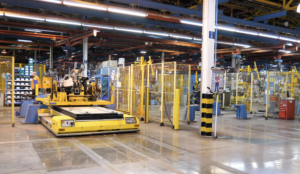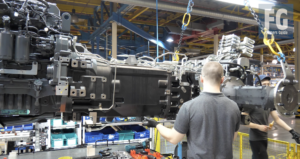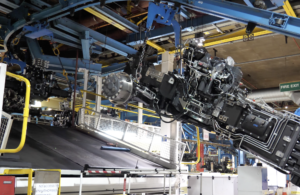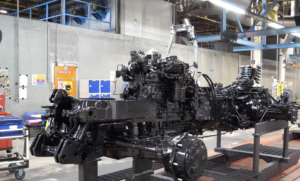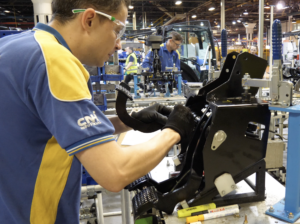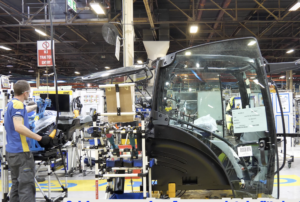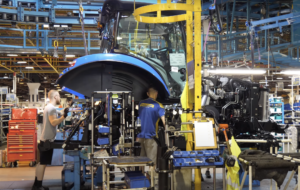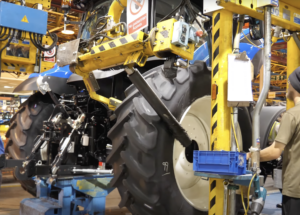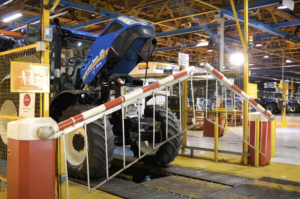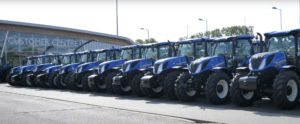VIDEO: How a tractor is made: A tour of the New Holland plant
28th September 2022
Since Covid-19 hit the UK in 2020, New Holland has operated a strict policy of no tours to keep the staff safe and the plant running – but Farmers Guide was lucky enough to be invited for a tour.
In this video (which you’ll find at the bottom of the page), you get an exclusive sneak preview of what happens inside New Holland’s Basildon assembly plant.
Parts are manufactured around Europe and then delivered to the plant using a ‘just-in-time’ process, which means well-organised logistics delivering the parts to the assembly line as they’re needed.
It starts with two main parts; the engine and gearbox being brought together using one of the nine automated vehicles. Once they’re joined, it’s the beginning of a tractor.
It’s then moved onto a monorail system, by which it is carried around the plant. The monorail is the original system that was installed when the factory was built in the 1960s, although it has been modified to be able to handle the significantly heavier tractors produced today.
Hydraulic pipes, axles and other parts are added as it travels along the production line. The chassis never stops moving, so everything is attached as it passes through each area.
Then, it’s off to be primed and painted. The first part of the spraying process is done by robotics, but then a human takes over to ensure a high-quality finish on the harder-to-reach areas.
While much of the manufacturing process is done robotically, there are so many different models being made, with each having virtually unique – almost bespoke – specifications, that it’s difficult to automate the entire process.
When the factory opened in 1964, a total of 1,800-litres of paint would be used every day; yet today, despite increased production, more efficient methods mean only 439-litres are used daily. It’s said that there was so much paint in the air, cars outside would have a blue mist on them by the end of the day.
The shiny chassis is now painted and has dried on its stand, ready to continue around the plant.
Other smaller components are put together by hand, such as the pedal assembly, before being fitted to the tractor.
Cabs come in ready made, but have other components added based on the customer’s specification. Seats are so big that they need to be dropped through the roof.
It’s only when the cab is fitted to the chassis that it really starts looking like a tractor. The chassis is still moving along the monorail, so workers have to bring the cabs inline and keep them moving to be able to fit them correctly. It might only be slow, but it takes great skill from the team to be able to marry the two parts perfectly.
Wheels are now added and the tractor can now support itself. It’s dropped off the monorail and on to a moving track.
Once the tractor is fully built, gates lift up and it’s towed to the next area to be commissioned.
There are hundreds of new tractors outside the factory, waiting to be delivered to their final destinations – which can be anywhere in the world. They might looks shiny and clean, but they’ll have a tough life ahead working on the fields helping to not just feed the UK, but everyone on the planet.
